SpacestagramBrought to you by NASA’S Astronomy Picture of the Day API
M42: The Great Nebula in Orion
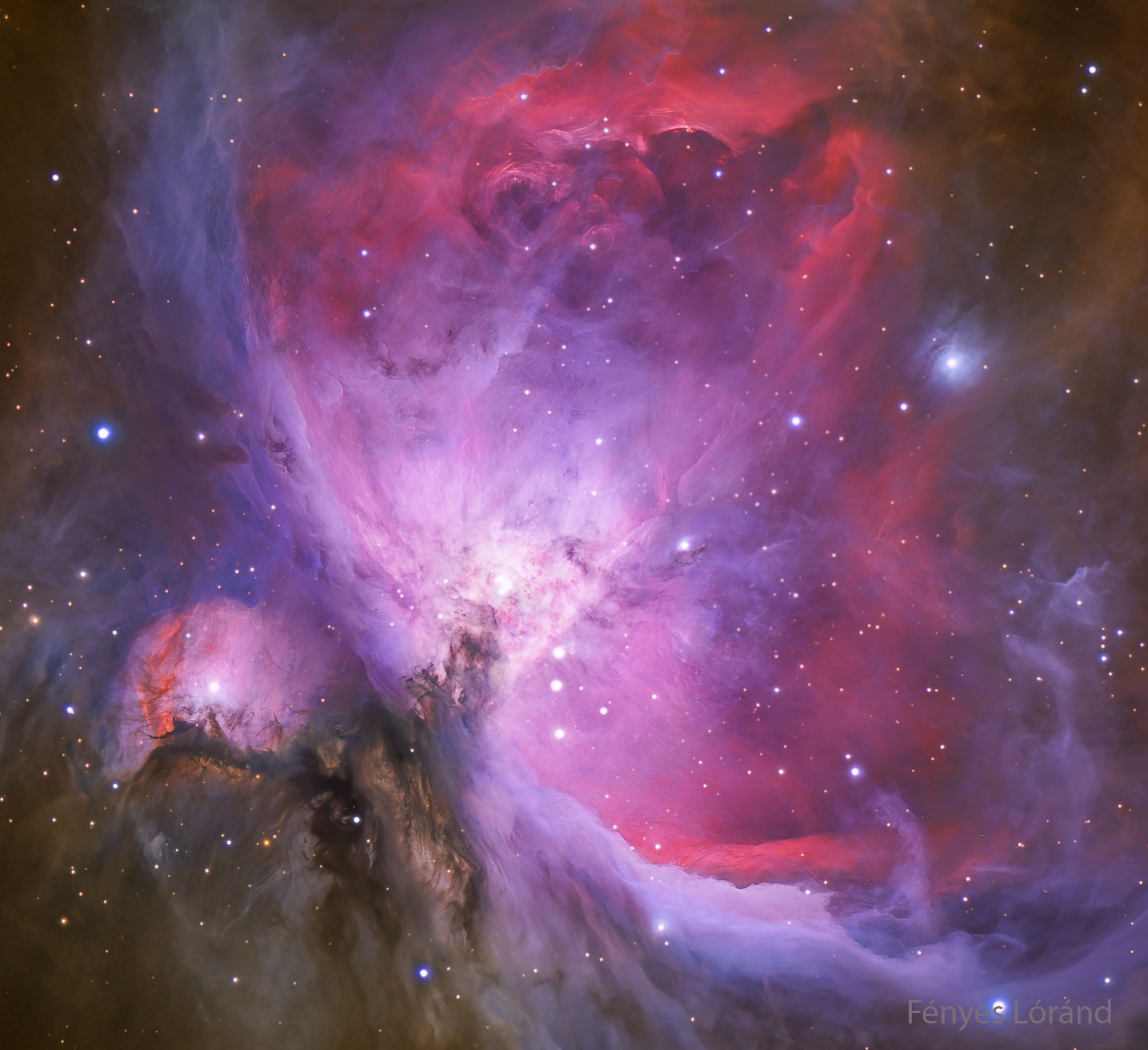
2024-11-04
The Great Nebula in Orion, an immense, nearby starbirth region, is probably the most famous of all astronomical nebulas. Here, glowing gas surrounds hot young stars at the edge of an immense interstellar molecular cloud only 1500 light-years away. In the featured deep image in assigned colors highlighted by emission in oxygen and hydrogen, wisps and sheets of dust and gas are particularly evident. The Great Nebula in Orion can be found with the unaided eye near the easily identifiable belt of three stars in the popular constellation Orion. In addition to housing a bright open cluster of stars known as the Trapezium, the Orion Nebula contains many stellar nurseries. These nurseries contain much hydrogen gas, hot young stars, proplyds, and stellar jets spewing material at high speeds. Also known as M42, the Orion Nebula spans about 40 light years and is located in the same spiral arm of our Galaxy as the Sun.
A 2001 Leonids Meteor Shower Fireball
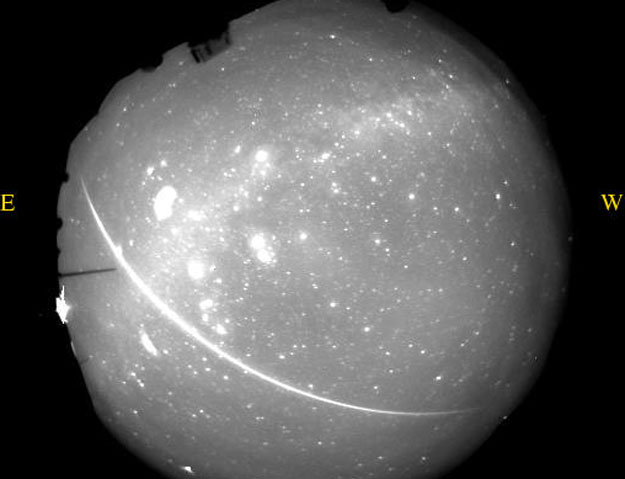
2001-11-19
The 2001 Leonids Meteor Shower gave quite a show to many parts of the world yesterday during the early morning hours. Many sleepy observers venturing into their own backyards were treated to several bright meteors per minute streaking across the sky. This rate made the 2001 Leonids the most active meteor shower in over three decades. Pictured above is a bright Leonid fireball that briefly lit up Hawaii yesterday morning. A CONCAM nighttime all-sky monitor on Mauna Kea, a dormant volcano, caught the bright meteor, seen as the very bright streak across the lower part of the fisheye image. The meteor track crossed the Galactic plane (the faint glow that runs from the lower left to upper right), passed below the planet Jupiter, and through the constellation Orion. CONCAMs in Hawaii, Arizona, and California all recorded numerous bright meteors during this year's Leonids.
Skylab Over Earth
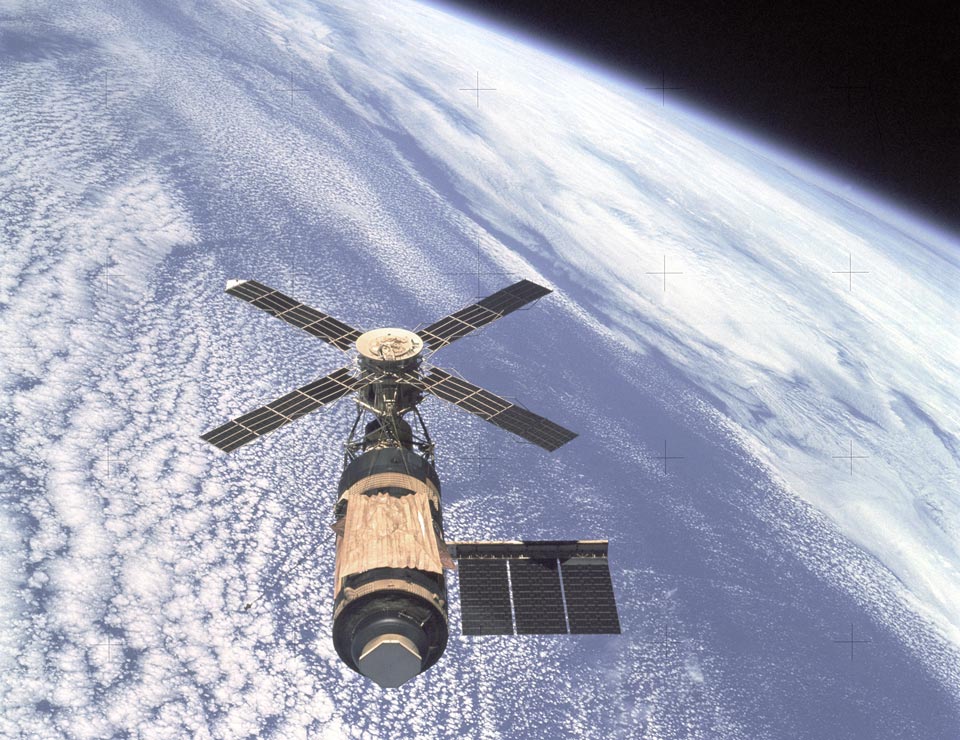
2013-08-18
Skylab was an orbiting laboratory launched by a Saturn V rocket in May 1973. Skylab, pictured above, was visited three times by NASA astronauts who sometimes stayed as long as two and a half months. Many scientific tests were performed on Skylab, including astronomical observations in ultraviolet and X-ray light. Some of these observations yielded valuable information about Comet Kohoutek, our Sun and about the mysterious X-ray background - radiation that comes from all over the sky. Skylab fell back to earth on 1979 July 11. Highlights of the 2013 Perseids Meteor Shower
Galaxy Group Hickson 31
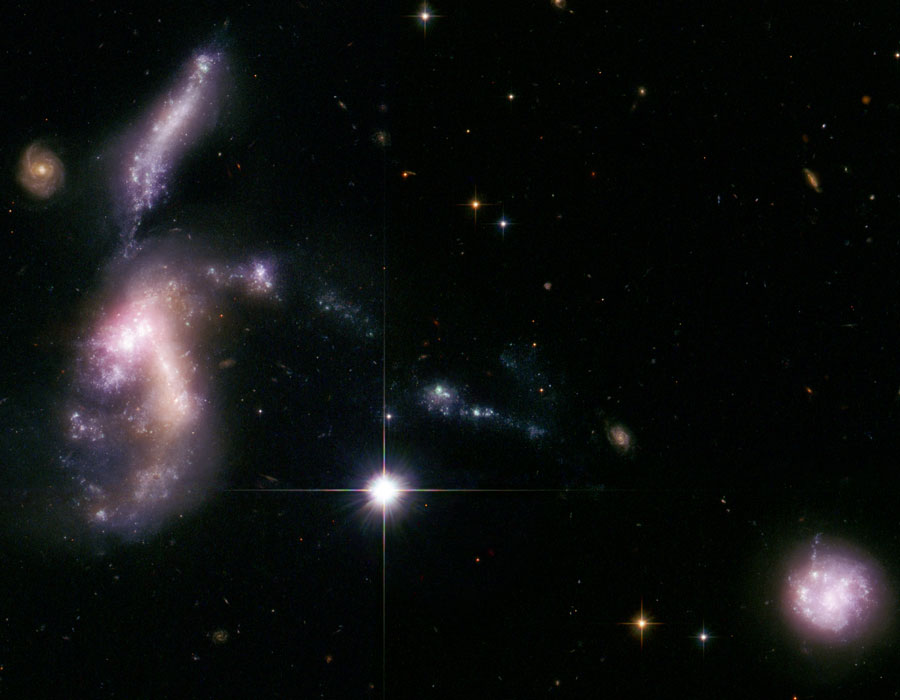
2010-02-22
Will the result of these galactic collisions be one big elliptical galaxy? Quite possibly, but not for another billion years. Pictured above, several of the dwarf galaxies of in the Hickson Compact Group 31 are seen slowly merging. Two of the brighter galaxies are colliding on the far left, while an elongated galaxy above is connected to them by an unusual bridge of stars. Inspection of the above image further indicates that the bright duo trail a rope of stars pointing to the spiral galaxy on the far right. Most assuredly, the pictured galaxies of Hickson Compact Group 31 will pass through and destroy each other, millions of stars will form and explode, and thousands of nebula will form and dissipate before the dust settles and the final galaxy emerges about one billion years from now. The above image is a composite of images taken in infrared light by the Spitzer Space Telescope, ultraviolet light by the GALEX space telescope, and visible light by the Hubble Space Telescope. Hickson Compact Group 31 spans about 150 thousand light years and lies about 150 million light years away toward the constellation of Eridanus.
Hawaii
Credit:
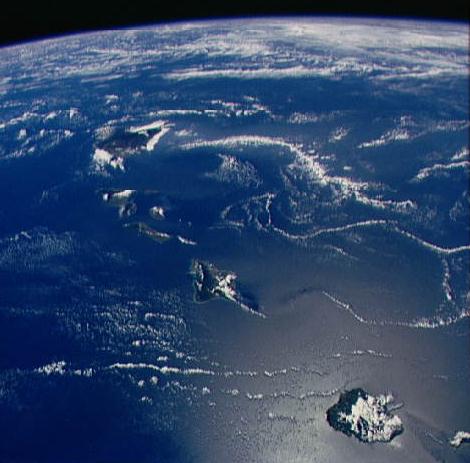
1997-03-02
Aloha! With the graceful arc of the Earth's limb in the background, the entire Hawaiian Island archipelago is visible in this stunning photo taken by the astronauts onboard the shuttle Discovery in October of 1988. Along with popular beaches and tropical resorts, these volcanic islands offer extreme elevations with dark, dry, cloudless skies. Consequently they have also become popular sites for sophisticated ground based telescopes. The peak of Mauna Kea, on the Big Island (upper left), boasts an impressive array of astronomical instruments including the Keck, the Canada-France-Hawaii Telescope, the NASA IRTF, the JCMT and UKIRT, and the Gemini Telescope Project. The dormant volcanic cone of Haleakala on Maui (just below the Big Island) is home to the Air Force Maui Optical Station and the Mees Solar Observatory. Mahalo nui loa!